A strong roof protects your home from rain, wind, and cold weather, keeping your family and belongings safe. Many UK homeowners only notice roof problems when damage appears, which often leads to expensive repairs. Regular inspections help spot minor issues before they become serious, making it easier to maintain a safe, durable roof year-round.
A clear checklist helps you spot issues early. You look at tiles, flashings, gutters, and the loft. When you understand the roof’s condition, you plan repairs on time and avoid extra costs. This guide explains what to check during an inspection for UK homes.
Roof Inspection Checklist
A detailed roofing inspection checklist allows every homeowner to understand the actual condition of the structure. The following points cover the most critical areas.
1. Condition of Roof Covering Materials
You check tiles, slats, or shingles for early signs of damage. Minor faults let water in and increase repair costs.
- Look for cracks or loose pieces.
- Check for curled or lifted edges.
- Notice any missing tiles.
- Check for damp marks inside the loft.
- Use a drone or a camera to inspect hard-to-reach or high areas.
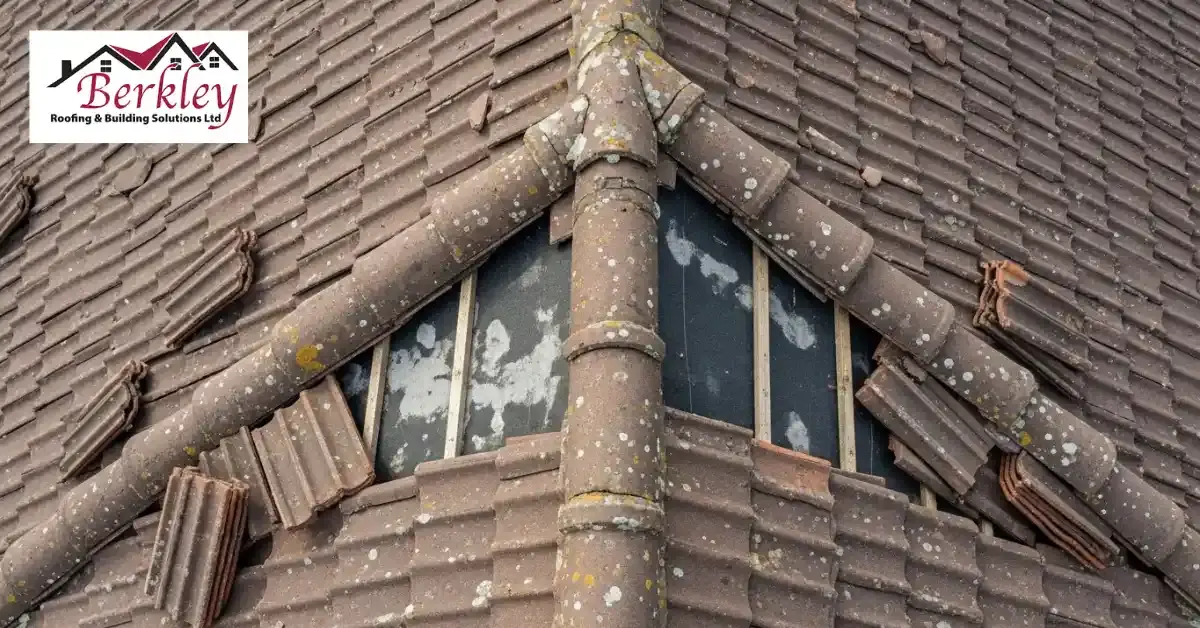
2. Inspect Flashings Around Openings
Metal flashings around chimneys, skylights, and vents prevent water from entering. Damaged flashings often cause leaks.
- Look for rust or corrosion on flashings.
- Check for gaps, cracks, or lifted edges.
- Inspect around chimneys, vents, and skylights for water entry points.
- Check that flashings are sealed and secured

3. Gutters, Downpipes and Drainage
Blocked gutters and downpipes can cause water to pool on the roof and damage walls. Proper drainage keeps the roof and home safe.
- Check that gutters and downpipes are clear of leaves, moss, and debris.
- Check that water flows without blockages.
- Look for leaks, cracks, or loose fittings.
- Inspect connections to drainage systems for proper flow.
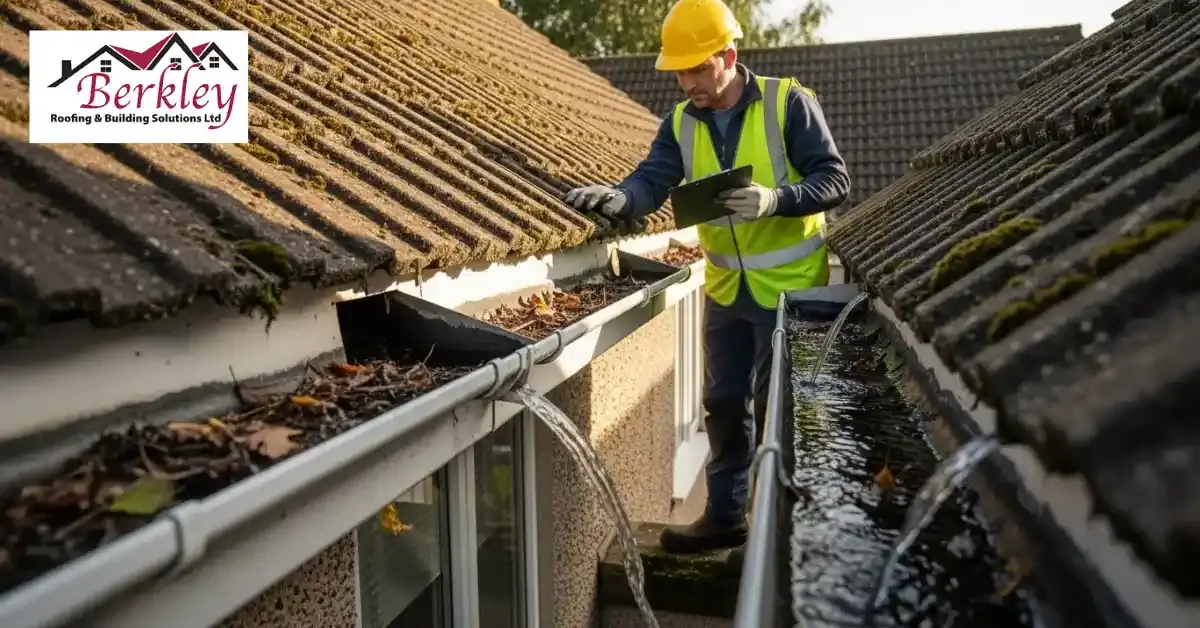
4. Signs of Water Damage Inside the Loft
The loft can reveal issues not visible from outside. Damp, stains, or soft wood indicate water entry.
- Look for water stains on beams or rafters.
- Check for damp patches or mould.
- Test wood for softness or rot
- Check that the insulation is dry, and there is no musty smell.
- Confirm proper ventilation and airflow
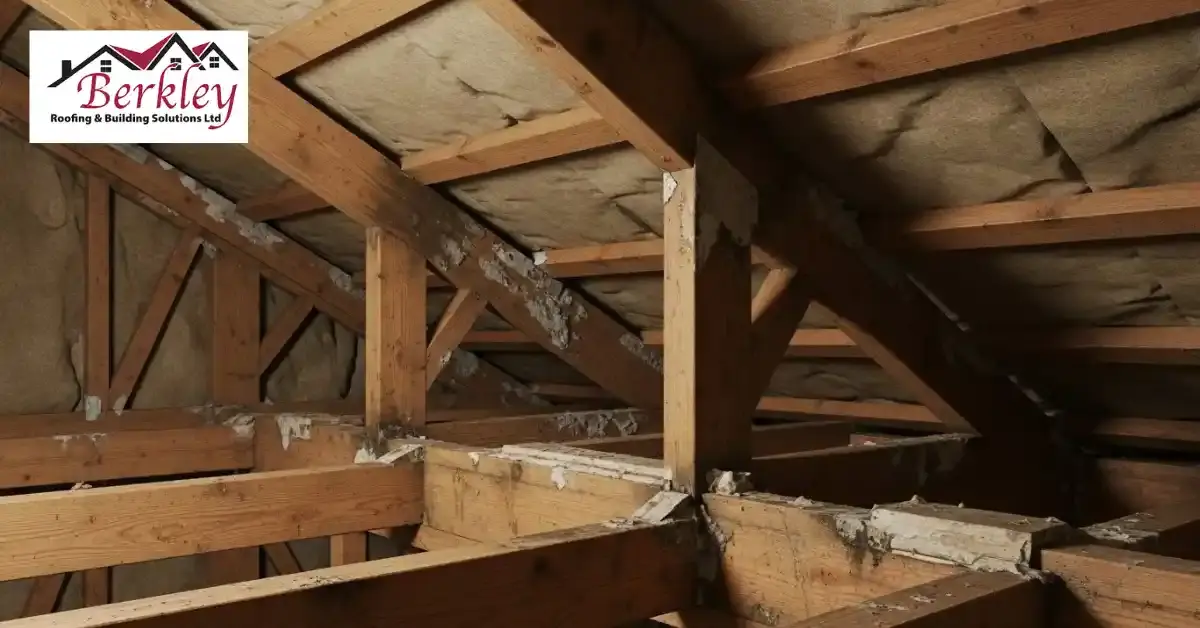
5. Debris or Moss Build-up
Moss and algae grow quickly in the UK. Heavy growth traps moisture, which can damage tiles.
- Remove moss from tiles.
- Clear leaves, twigs, and other debris from the roof
- Check for loose tiles where pests may nest.
- Maintain regular cleaning to prevent long-term damage
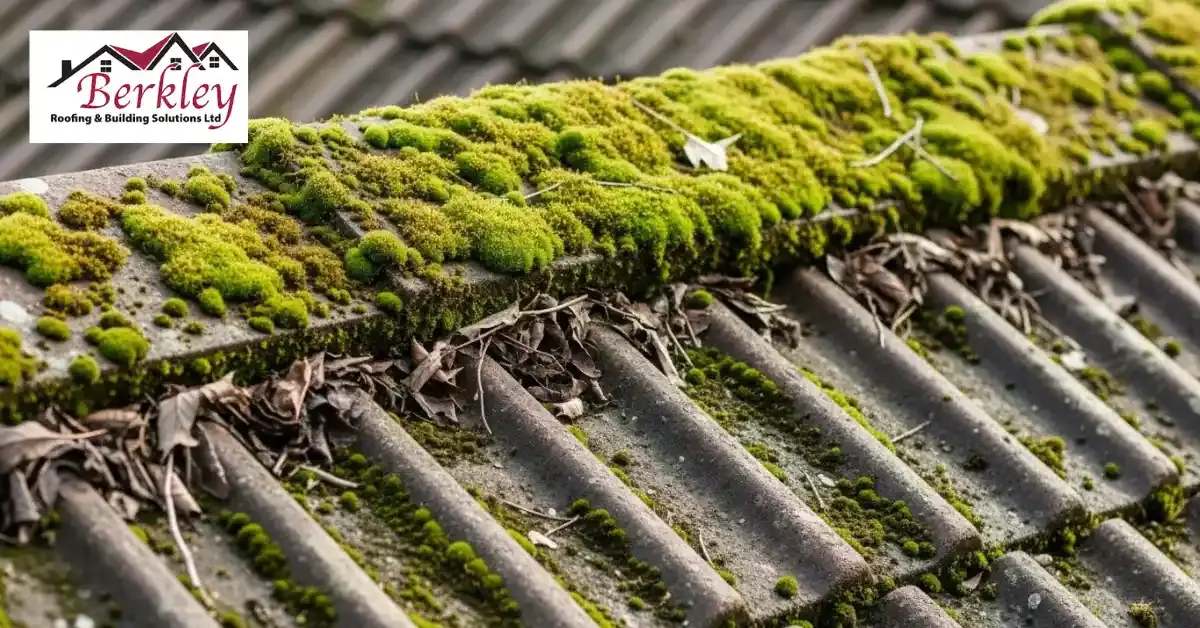
6. Roof Structure and Support
A stable internal frame keeps the roof strong. Sagging or uneven areas indicate structural stress.
- Look for sagging lines or dips along the ridge.
- Check for uneven surfaces on the roof.
- Inspect visible beams for cracks or damage.
- Call a professional if you notice structural issues
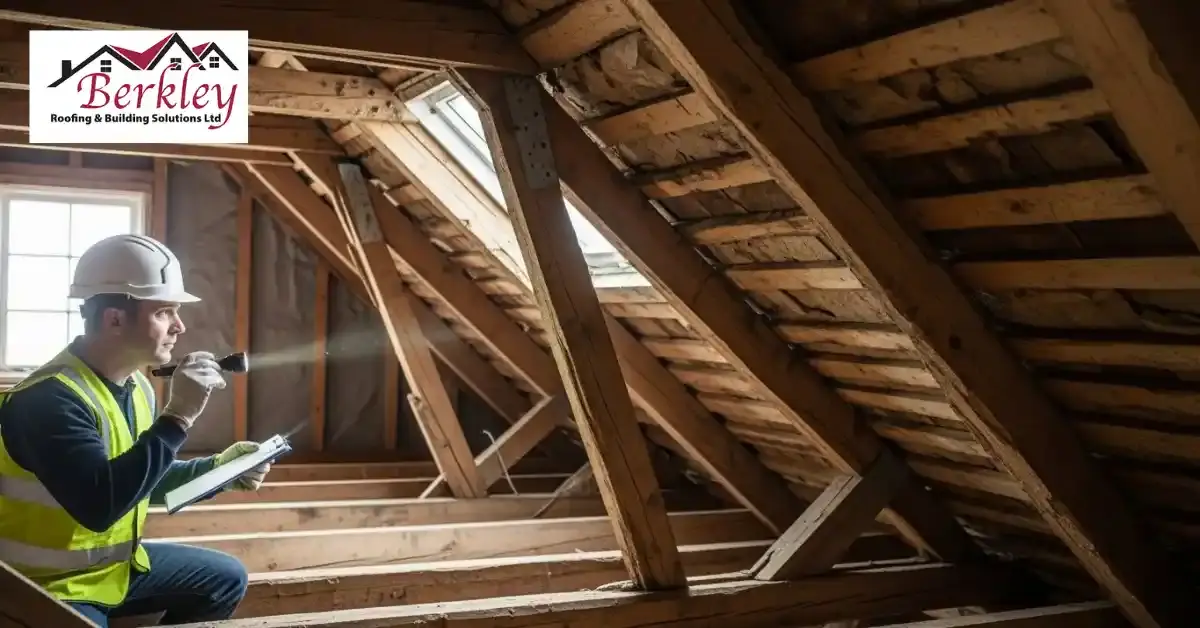
Notice sagging, dips, or cracks? Get a trusted roofing specialist to check your roof and prevent bigger problems.
7. Condition of Roof Valleys
Roof valleys carry the most rainwater and are prone to leaks if damaged or blocked.
- Check for cracked, broken, or missing tiles in valleys.
- Remove debris like leaves or moss.
- Check that water flows freely through the valleys.
- Inspect joints and edges for gaps or damage
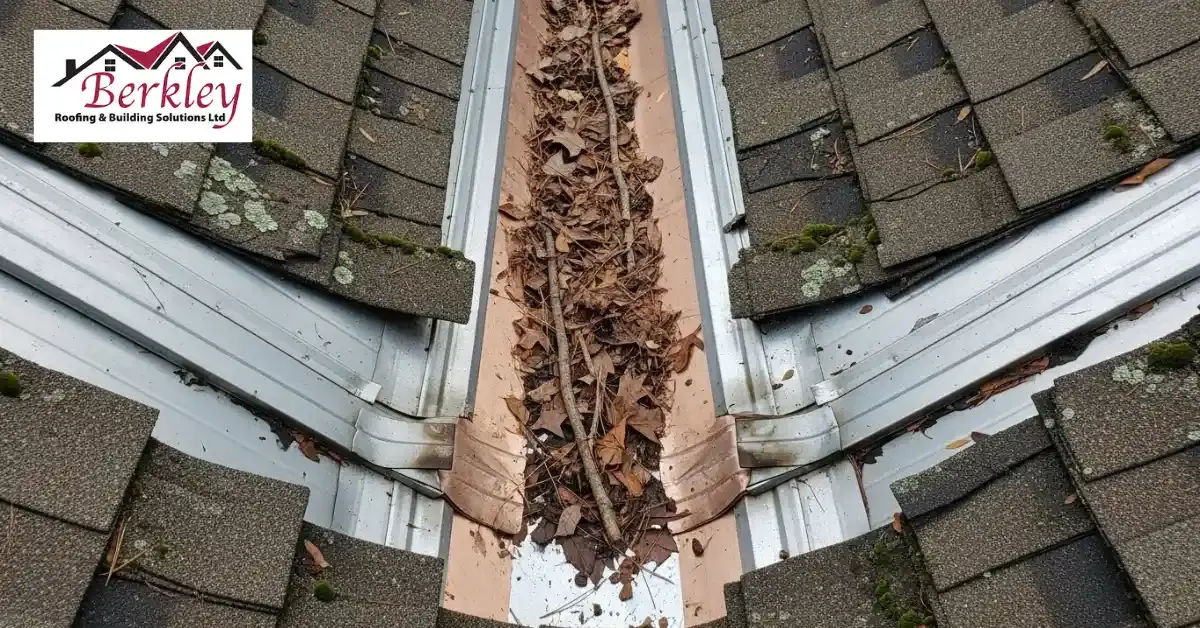
Roof Inspection Methods in the UK
Different inspection methods help homeowners understand the roof’s condition and spot issues early. Choosing the right method depends on roof height, complexity, and accessibility.
- Traditional Roof Inspections: An expert climbs the roof using ladders. They check tiles, flashings, gutters, and the loft by hand. Older roofs are handled carefully to avoid damage. This method gives a clear view of the roof’s condition.
- Drone Roof Inspections: A drone captures photos and videos from every angle. It reaches hard-to-access spots safely. This method works well for tall or complex roofs. Homeowners get detailed images without anyone having to climb on the roof.
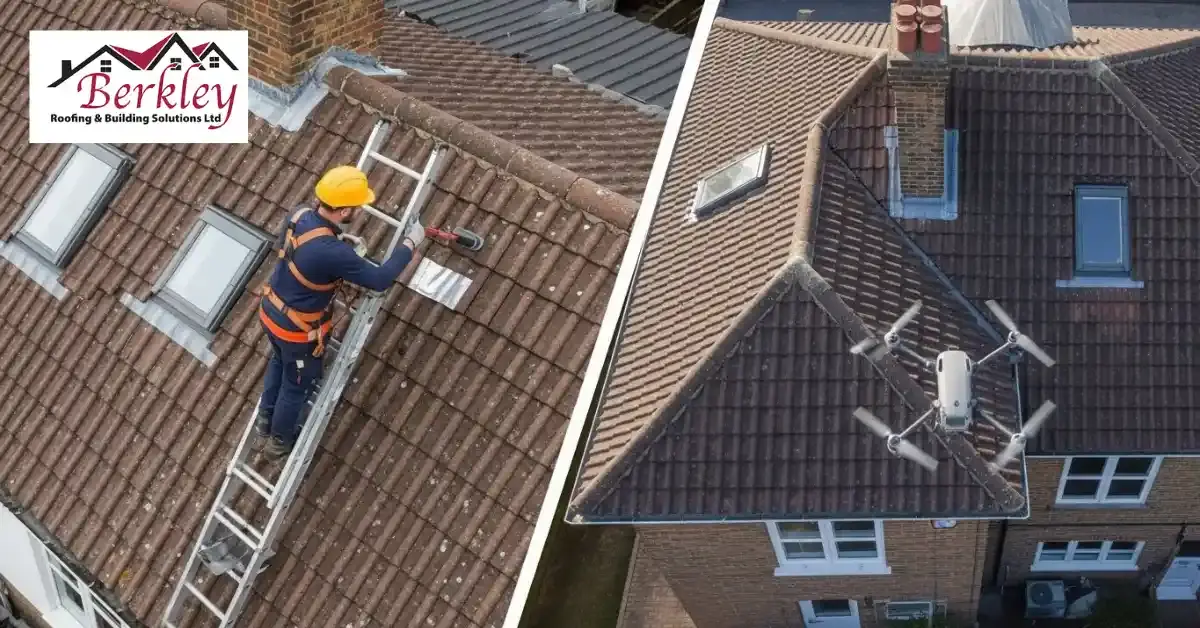
Benefits of a Professional Roof Inspection
A professional roof inspection goes beyond just checking the surface. It helps homeowners understand the roof’s condition clearly. Small issues like cracks, loose tiles, or worn flashings are found early, preventing bigger water damage later. Inspections can also reveal areas where heat is escaping, helping to lower energy bills. Detailed reports are useful for insurance, selling the home, and planning future repairs.
How to Reduce Roof Inspection Costs
Many homeowners want to protect their homes without paying more than necessary. The following tips can help reduce roof inspection costs:
- Choose drone inspections for faster results and lower preparation costs
- Work with reputable companies that provide honest assessments.
- Book inspections during quieter seasons, like late autumn or early spring
- Keep gutters clean to avoid preventable issues.
- Schedule regular inspections to prevent minor problems from turning into major damage.
Signs You Need a Roof Inspection
Homeowners should check their roof after heavy rain, strong winds, or storms. Look for missing or damaged tiles, damp patches on ceilings, blocked gutters, or a musty smell inside the home. These are clear signs that a professional roof inspection is needed. Many people also inspect the roof before buying a property to understand its actual condition. Having an annual inspection provides the best protection, keeps the home safe and energy efficient, and adds value, as buyers prefer homes with clear maintenance records.
Conclusion
Regular roof inspections keep your home safe and your roof in top condition. They help spot issues like damaged tiles, blocked gutters, or structural problems before they turn into costly repairs.
Scheduling annual checks protects your investment, maintains property value, and gives you peace of mind. Detailed reports from professionals help you plan repairs easily, and you can turn to reliable roofing services whenever you need expert support.
FAQs
1. What is included in a roof inspection?
A roof inspection usually covers checking tiles, flashings, gutters, downpipes, roof valleys, the loft, and signs of water damage. Inspectors also look at the roof structure and support.
3. Which roof inspection method is better, traditional or drone?
Traditional inspections allow hands-on assessment of tiles, gutters, and loft areas. Drone inspections provide detailed imaging quickly and safely. The choice depends on roof height, complexity, and homeowner preference.
4. Can a roof inspection help with energy efficiency?
Yes, inspections can reveal gaps, worn flashings, or poor insulation that lead to heat loss, helping homeowners reduce energy bills.

